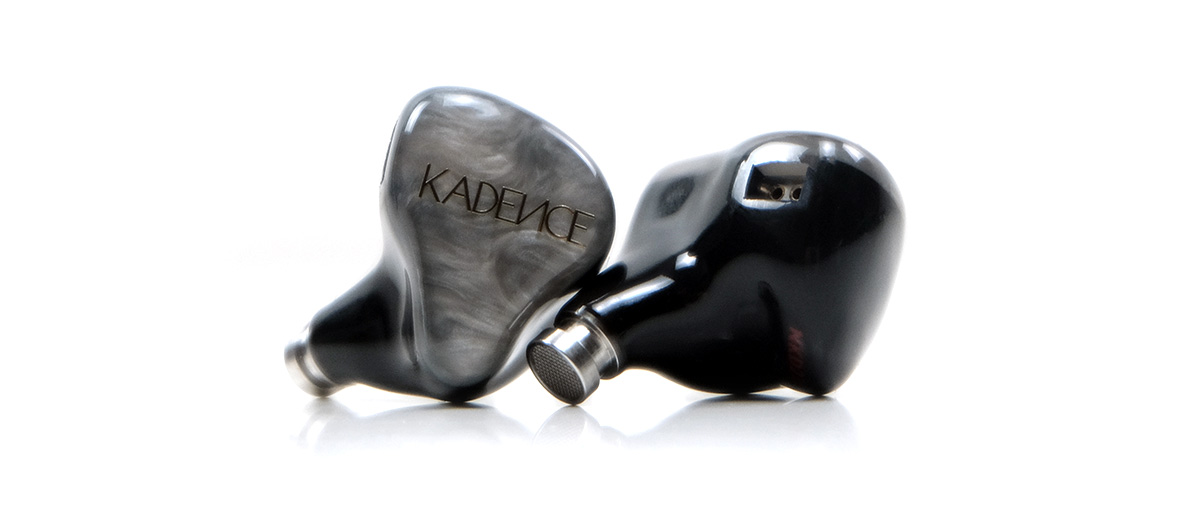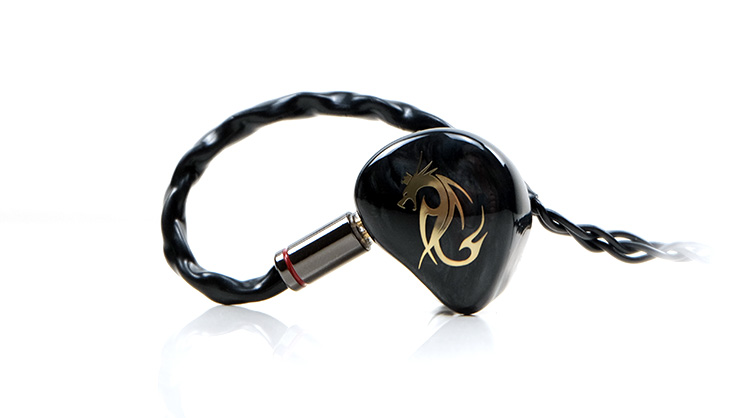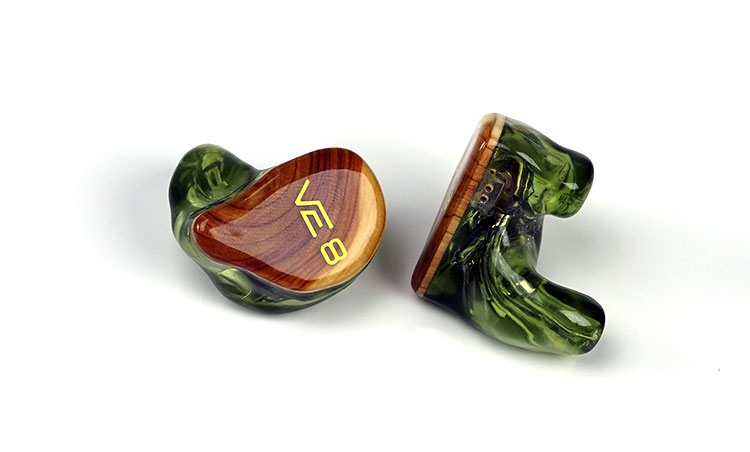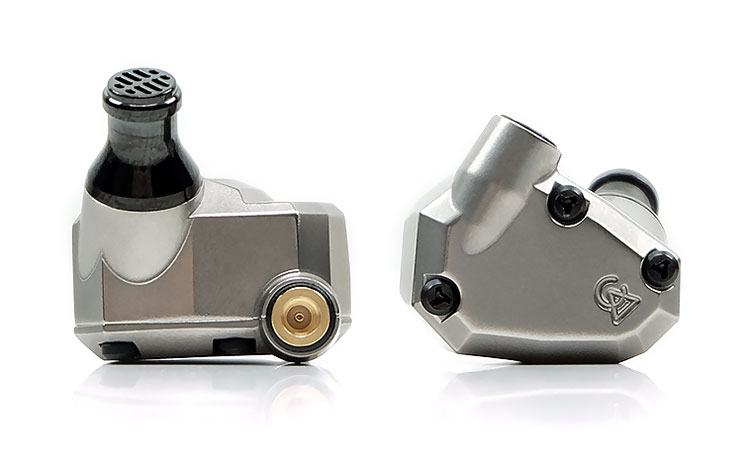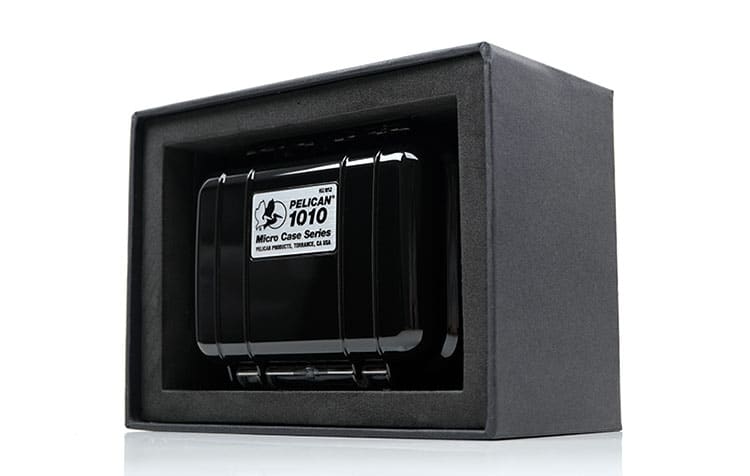Select Comparisons
All comparison commentary was completed using a mix of the HiBy RS8, Cayin N8ii, and the FiiO M17 as the main connected sources.
Noble Audio Kublai Khan
$2599
The Kublai Khan is one of Noble’s official flagship series products and was released towards the 3rd quarter of last year and was just reviewed by us a week ago. You can read our full review of the Kublai Khan here.
Technical
The Kadence is quite a different proposition from the Kublai Khan. For one, it’s an all-BA driver implementation as opposed to a hybrid of dynamic, BA, piezo, and bone conduction.
You get a mix of 6 Sonion and 2 Knowles with no official driver grouping listed. This is compared to a single 10mm dynamic layered with an additional 10mm bone conduction for the lows. This is followed by 4 BA for the mid-to-highs and a 10mm ceramic piezoelectric for the ultra-highs.
The crossover should be different for both IEMs. Perhaps a 3-way versus a 4-way but on top of that the bone conduction woofer will create a very different bass response to the BA lows of the Kadence.
The sensitivity of both also varies considerably. With a piezo, bone conduction, and a 10mm dynamic thrown into the mix it’s no surprise that the Kublai Khan is a more demanding in-ear monitor in terms of gain requirements.
Sadly, we have no precise data with the exception that both have loads of under 35Ω but after some real-world testing, I can safely say the Kadence is way more sensitive but with less scaling potential than the Kublai Khan.
On the FiiO M17 using a low gain balanced output with All-to-DSD turned on, the Khan needed an additional 20 steps higher to match the Kadence in terms of loudness.
Design
Both of these IEMs follow a similar design language first seen on the older TUX 5 with more aggressively contoured but lightweight composite resin molds, longish nozzles with stainless-steel caps, and matching mesh dirt guards.
However, they are not exact matches with the Kadence’s diminutive driver internal setup allowing Noble to reduce the overall size of the shells to something a bit smaller than the Kublai Khan. The Khan needs that additional internal space for both the larger dynamic driver and the partnering bone conduction woofer driver.
The nozzle on the Kadence is also a little bit shorter which, in turn, brings the shell a bit closer to your ear so the resulting contouring in the shell design is a bit more aggressive to maintain comfort from that resulting tighter fit.
Because the Kadence is smaller it is also lighter with a lower profile when in your ear. It has the edge in overall comfort and because it has no vent its sealing performance is marginally superior.
The additional tips in the Kadence package make a difference for me with the new red stem single-bore silicone versions offering the best mix of performance and seal. The foams will do better for isolation but dim the performance slightly.
Both of these monitors use the same cable, just a question of what termination you want when checking out. That means a 1.2m 8-core OCC cable which I am assuming is 26AWG copper wire.
Performance
There are some standout differences between these two that will appeal to different users.
The Kadence is airier, with more of a delicate touch to its notes whereas the Kublai Khan sounds denser and more rounded in its delivery. This is a stronger level of bass and vocal note body with what you might perceive as a slightly slower pace from that dynamic driver but in return, it generates better power and a firmer fundamental.
The Kadence delivers an enhanced treble presence, more sparkle if you will, but also a bit more of an odd-harmonic overtone on the mids timbre and less bass influence so notes are wispy but very articulate in their delivery.
The Kadence low-end is surprisingly punchy, enhanced by the faster BA decay creating some nice space for the layering to be easily picked out. The Kublai Khan is a shade slower in its delivery but offers a stronger sub-bass extension and elevation over the mid-bass which some might prefer for modern pop and rock.
A stronger upper bass to lower mids scoop on the Kadence is a factor in the solid bass-to-mids separation but it also means instrumental notes will be more on the neutral to clean side compared to the warmer tone of the Kublai Khan in the equivalent region.
For imaging, the Kadence does extremely well through the mids and upper mids. Plenty of percussive energy and vocal sparkle with a rising curve from 2-3k onwards which is slightly more subdued on the Kublai Khan.
Your ear is drawn to the mids and treble a bit more on the Kadence as a result. Whereas I find the bass and 1-3k vocals more prominent on the Kublai Khan and less influenced by the treble, especially when using the foam tips.
Vision Ears VE8
From €2350
The Vision Ears VE8 has been out for quite a while now, launching way back in Q2 of 2017. At the time it only came in a custom format which is the version we have here.
However, Vision Ears has recently opened up its product selection to now include universal versions of pretty much all its current offerings. You can read our full review of the evergreen VE8 here.
Technical
The VE8 is another all-BA design and rocks a similar 8-driver count similar to the Kadence. Vision Ears does not state what type or brand of BA drivers are used such as Sonion or Knowles but they do give us a specific driver grouping with 2 for the lows, 2 for the mids, and no less for 4 for the treble.
We are presuming the two Knowles drivers inside the Kadence are tweeters meaning it’s probably either a 4-2 or 2-4 split for the Sonion drivers for the mids and lows. Since the VE8 uses a 3-way crossover it’s quite possible the Kadence follows a similar implementation.
The VE8 is rated at 22Ω and up to 120dB SPL @1kHz which makes it one of the more sensitive in-ear monitors here at the office. It does not take that much to drive it and it can be sensitive to older sources with higher noise floors such as the FiiO M15 in balanced output mode.
Noble does not reveal the specs for the Kadence but does make it seem it’s one of their most sensitive IEMs to date. Truth be told, out of the low gain balanced output of the M17 both IEMs seemed similarly matched for dynamics and volume. These two will work just fine with dongles such as the Cayin RU6 and the Questyle M15.
Design
You can get the VE8 in a universal format though the one we have here is the custom version. I am not sure if you can get the Kadence in a custom version though from time to time Noble can surprise you.
That’s quite a contrast in styling though to be fair I found the more diminutive Kadence to be a lighter fit in the ear. The customized VE8 will give you maximum accuracy in terms of fitting and yes, it will seal that much better as a result. However, it’s a bigger unit as a result.
With the universal version, the Kadence tips will play a huge factor in the coloration of the final output whereas, with the custom version of the VE8, most companies would say that is their truest tuning.
One thing to note, even if you do go universal with the VE8 you can still configure both the faceplate and shell design online so you do get a lot more options for putting your own personal flavor to the look.
The Kadence is a bit more fixed in terms of how it looks though sometimes Noble can churn out a Wizard Prestige design that can blow you away. However, there is nothing like that at the time of writing.
The last is a critique of the cable choices. The VE8 cable stock cable is pretty poor in all honesty. It’s a throwaway Plastics One type of cable which is great for comfort and durability but not a patch on the 8-core OCC that comes with the Kadence in terms of quality of build and overall dynamics in the performance.
Performance
Overall, the VE8 comes across as a little bit thicker sounding, warmer in part, and more intimate in its delivery compared to the cleaner, airier tone of the Kadence.
Since both have an all-BA setup, (even at 8), you will find that generally the bass texture is relatively similar and both have roughly the same level of extension. However, the VE8 does sound a bit more elevated, and a bit denser as well as with less of a drop or scoop into the upper bass and lower mids.
That difference creates a bit more bass presence from the VE8 and power whereas the Kadence sounds more mid-bass punchy and precise. I would say also the Kadence may lack the same weighted fundamental but it is a little more bass-to-mids separation and layering from that stronger lower-mids scoop.
On the top end, no question the Kadence has a stronger treble push from 3-8k whereas the VE8, while extending quite well up to 10k, is generally more relaxed in its elevation so not quite as much headroom.
As a result, the VE8 timbre is a bit more to the even-harmonic smooth and natural side whereas the Kadence is cleaner and more vivid in its delivery but also a little more ethereal and lighter in its respective note body. Of the two, the VE8 is going to be the more forgiving for brightly recorded tracks.
For me, the VE8 brings the stage closer in part, definitely with the low-end presence but lacks a little bit of mids air compared to the spaciousness and more open-sounding Kadence’s mids.
Campfire Audio Ara
$1299
The Campfire Ara is one of the company’s still active high-end offerings in a universal format and was launched back in the Spring of 2020. It is still an actively sold product and you can read our full review of the Ara here.
Technical
This is an all-BA driver implementation but we drop down a driver to 7 with the Ara as opposed to 8 inside the Kadence. There is no mention of driver branding but I would presume either Sonion or Knowles or both inside the Ara similar to the Kadence.
The precise driver grouping inside the Ara is 2 T.A.E.C. tubeless for the highs, one balanced armature for the mids, and four for the lows. Some might consider 1 BA for the mids a bit unusual but from experience that’s a good-performing full-range BA driver plucked from the Solaris SE.
We have no such equivalent specs for the Kadence, so it could be a mirror but given they like to put a few more into the mids when allowed I lean more toward a 2-2-4 or a 4-4-2 with the Knowles drivers used as tweeters.
The ratings on both are equally hard to determine just by paper glancing. For one thing, Noble does not release any specs other than lower than 35Ω and is one of their most sensitive IEMs to date.
Campfire does release specs for the Ara but they are done in a very different manner by weighting their SPL dB rating by how much Vrms is required to achieve a 94dB SPL @1kHz benchmark.
Thus, the Ara requires 7.094mVrms to hit 94dB which is a little less sensitive than the Andromeda 2020. If you know anything about some of the BAs used by Campfire you will know they are incredibly sensitive. So, yes, in our M17 side-by-side test, the Ara seemed marginally more efficient than the Kadence though not by much.
Design
Two very different design philosophies here with the Ara keeping well within the familiar in-house design language used by Campfire for many years and the Kadence breaking away from Noble’s older unibody aesthetics.
That means an alloy for the Ara and this time a very sturdy and dense titanium Grade 2 material cut from a single billet and adorned with those very familiar triple Torx screws adorning the faceplate, this time in black. And despite being a lot smaller than the Kadence it is the heavier of the two IEMs due to that alloy material.
You will also notice it lacks a lot of Kadence’s physical contouring. Now up until the Um Maven Pro I would have simply said it’s because metal is harder to shape than resin but the recent Um Maven Pro’s titanium custom design proved me wrong.
Rather contouring on the Ara is simply not required due to its diminutive dimensions being unlikely to come in contact with any pressure points in your ear. The alloy will feel heavier and colder on initial insertion but overall, a fairly comfortable fit.
The Kadence does have a stronger passive isolation performance when both are fitted with silicone tips. You can level the playing field a bit more though by using foam tips on the Ara but this generates a bit more pressure in your ear canal and is not quite as comfortable as the Final E tips I use with them.
One final comment between these two is the cable choice. The Ara is Beryllium/Copper MMCX terminated with Campfire Audio’s own 4-wire SPC Litz cable which is a nice and light cable with low microphonics and decent performance but not quite to the level of the 8-wire OCC stock Kadence stock cable.
Performance
The Ara is much flatter for me in terms of a response curve, save for a very prominent 1-3k bump which pushes vocals quite far forward and it is they that often take center stage when crossing that particular narrow range.
That tends to push Ara’s perceived instrumental arrangement a bit behind the vocal artist creating a sort of ‘tunnel’ with a presence that is less distinct or as airy or spread out.
The Kadence vocals are relatively forward but in comparison have a more neutral position within the overall presentation. What changes your perception is the amount of headroom and space Noble has tuned into the Kadence to allow the vocals to command their own position but at the same inject more air into the mids for instruments to also shine.
The Ara’s treble is much flatter though by no means muted or faded, it has some dips and bumps but none of them are exaggerated with the net effect of sounding quite neutral from 5-10k. It’s quite consistent also with the low-end which, despite a slight mid-bass emphasis, sounds quite neutral.
The resulting timbre from the Ara is less sparkle and perhaps a shade smoother and more rounded. It’s not overly lush or sweet, still relatively dry but does not have the same high-contrast levels as the Kadence through the mids and upper mids. You could argue it’s more forgiving as a result, even with that elevated vocal imaging.
No question the mid-bass punch of the Kadence has more character or definition and better separation. It helps also in terms of comparative staging depth creating a perception of a bigger hall-like acoustical space whereas the Ara has more of a dampened studio feel.
Our Verdict
The Noble Audio Kadence is a sort of re-imagination of the classic BA Noble sound. However, in lock-step with the hybrid Kublai Khan, the Wizard seems to have found the appropriate magic sauce to retain those sparkling highs in a very pleasing and coherent manner.
This is a delicate presentation, one with tons of articulating micro-detail but one that does not forget the pleasurable listening side of things either.
It is very easy to drive, perhaps even too easy though modern DAPs will give you a very black background, less so with dongles. Do mess around with those ear tips also, they make a big difference to the final output also.
Overall, an excellent purist’s choice, and a stark contrast to the bombastic delivery of the Kublai Khan but also a complementary monitor for detail lovers.
Noble Audio Kadence Specifications
- Composite body with unique acetate faceplate
- Stainless steel nozzle with an integrated wax guard
- 8 driver arrangement
- 6 Sonion balanced armature drivers
- 2 Knowles balanced armature drivers
- Impedance less than 35 ohms
- Sensitive enough for use with most smartphones as well as portable amps and daps
- Detachable 8-core cable with industry-standard 2-pin configuration (0.78 mm diameter)

